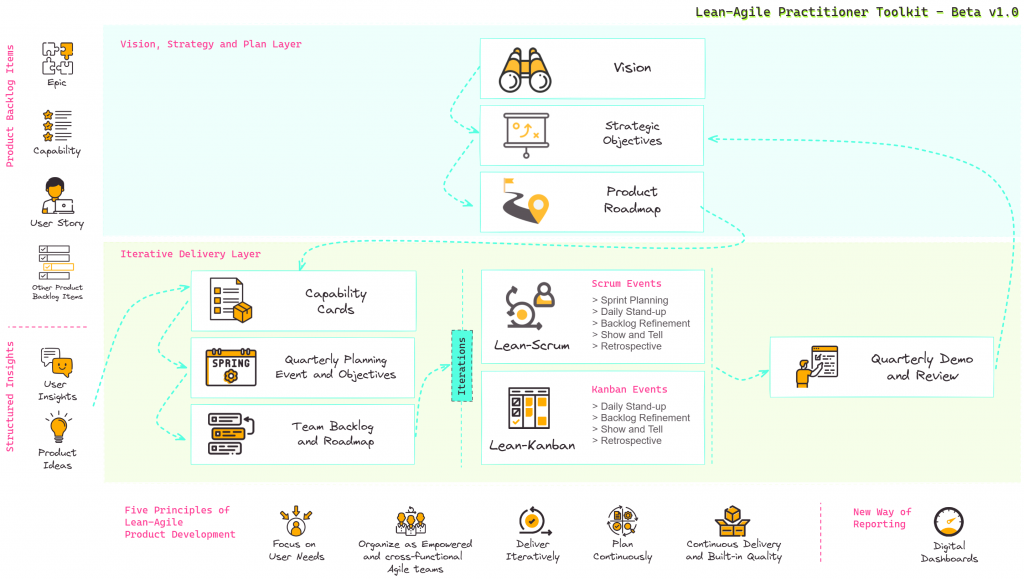Capability cards are powerful tools for product leaders and teams to streamline their quarterly planning process. Each card represents a significant body of work achievable within a single quarter by broken down into smaller user stories. Scrum teams might require one to six sprints to complete a capability.
Creating Capability Cards:
- Collaborative Effort: Product Owners/Managers and Tech Leads spearhead creation, with valuable input from Technical Architects, UX Designers, Developers, and other relevant roles.
Type of Capability Cards:
- Discovery: Set of discovery activity for a new epic, capability
- Design: UX, UI or Technical Design
- Value Creation: Development and delivery of a capability
Content of a Capability Card:
- Concise Capability Overview: A clear explanation of the capability’s purpose.
- Strategic Alignment: Links to the specific Strategic Objectives it aims to achieve.
- High-Level Scope Definition: Includes essential Non-Functional Requirements (NFRs).
- T-Shirt Sizing: Provides a relative effort estimate for planning purposes (Small, Medium, Large, etc.).
- Resource Links: Offers links to relevant resources for deeper understanding.
Characteristics of a Capability Card
- Focus on Context: Include only essential information to establish a clear understanding.
- Scope for Planning: Define the scope sufficiently to allow for T-shirt sizing and guide discussions during quarterly planning when breaking down the capability into placeholder stories.
- Pre-Planning Transparency: Capability cards shouldn’t be a surprise to the team and stakeholders. Share them with the team and relevant stakeholders and solicit feedback before the quarterly planning event.
- Accessibility: Ensure the cards are readily accessible through the team’s collaboration platform before and after the quarterly planning event.
- Dynamic Scope: The scope and context of a capability card can be adjusted during the quarterly planning event based on team discussions and capacity planning for the upcoming quarter.
An example:
| Capability Name | Authentication for the Private Beta Release |
| Type | Value Creation |
| Description | A secure authentication needs to be provided to our Private Beta users to access our application |
| Relevant Strategic Objective(s) | Complete the first Private Beta release in six months |
| Scope | In Scope: – Secure log-in – Password reset Out of Scope – Role Management |
| NFRs | – User can only be logged-in to the application when they are on our VPN |
| Size | S (2 Sprints) |


